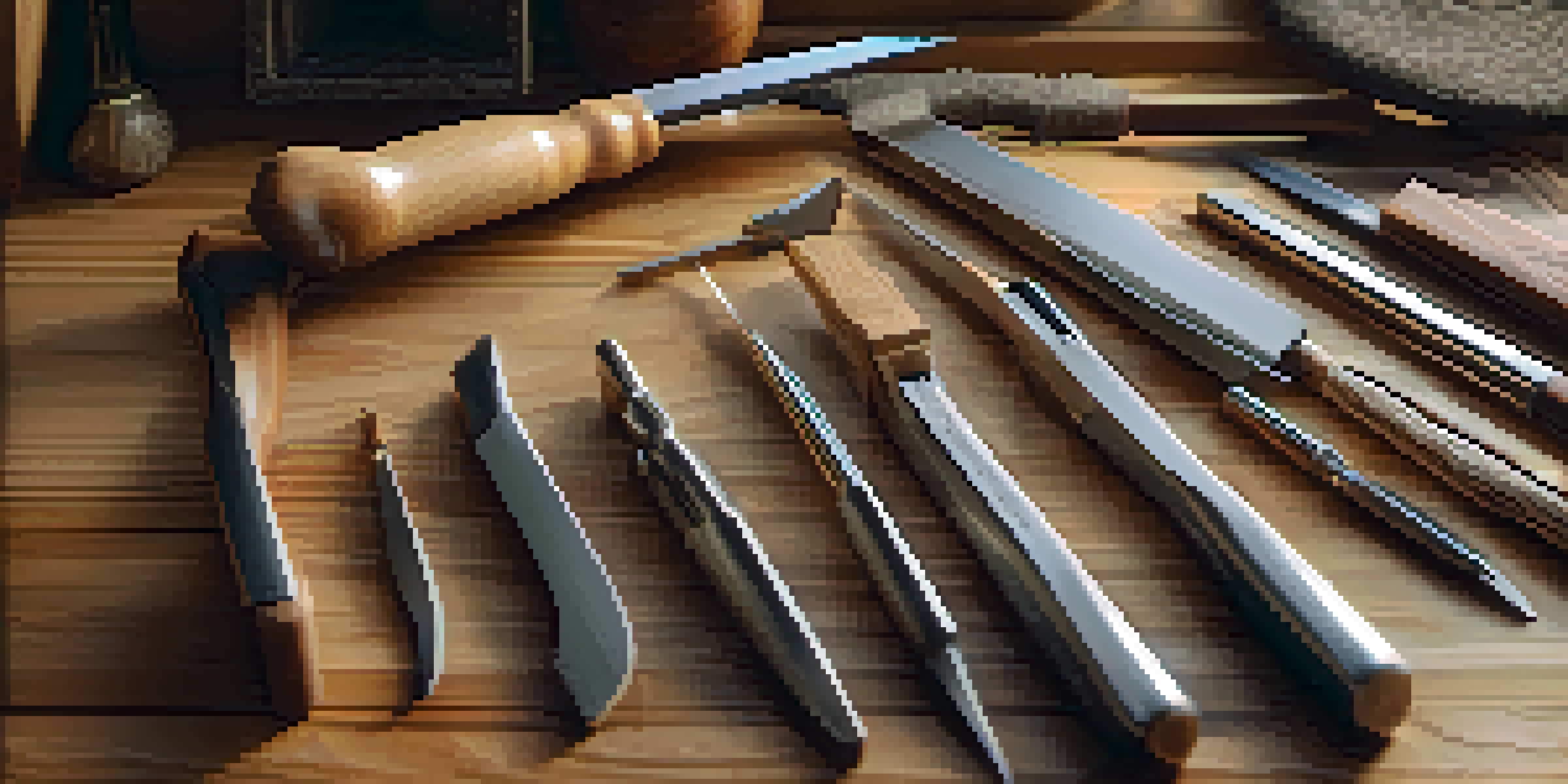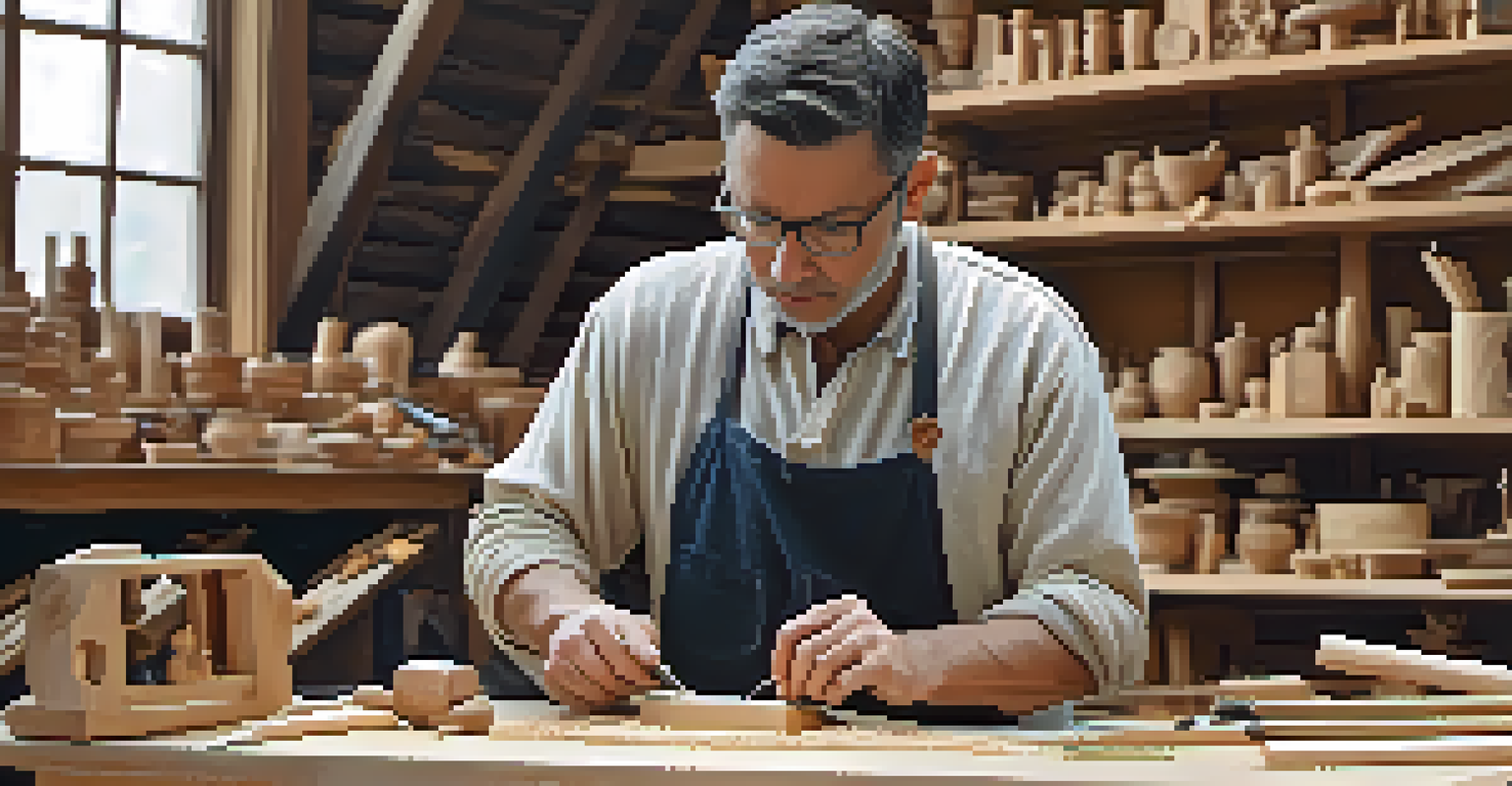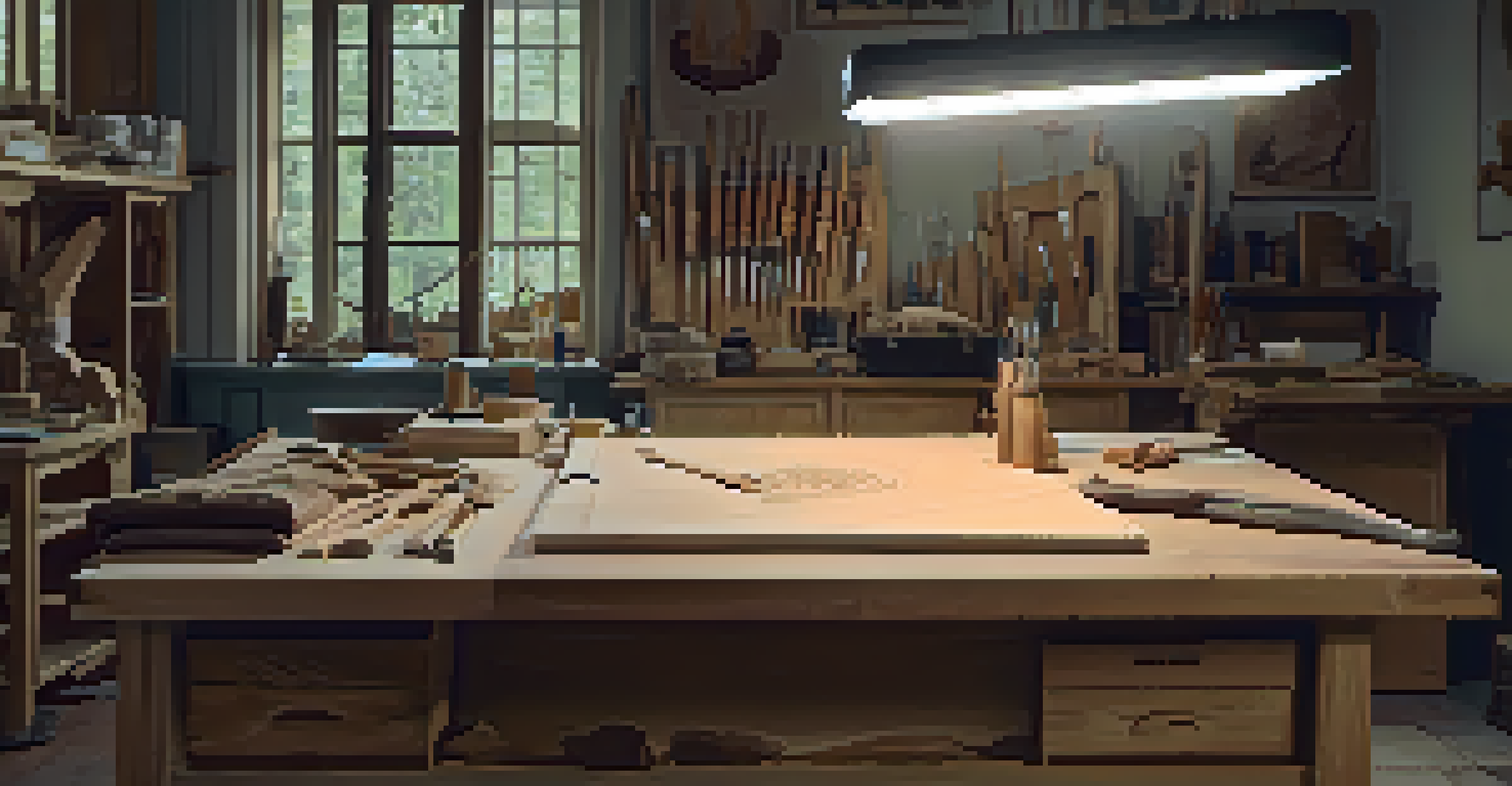Preventing Carving Injuries: Common Mistakes to Avoid

Understanding Carving Injuries and Their Causes
Carving injuries can range from minor cuts to severe lacerations, and they often occur when people underestimate the tools they're using. The excitement of creating something beautiful can lead to hasty movements, resulting in accidents. Understanding the common causes of these injuries is the first step in prevention.
An ounce of prevention is worth a pound of cure.
Many injuries stem from improper handling of carving tools, such as knives and chisels. For instance, using a dull knife requires more force, increasing the likelihood of slipping and cutting yourself. By recognizing these risks, you can take proactive measures to protect yourself while carving.
Furthermore, distractions can play a significant role in accidents. Whether it's a pet jumping onto your workspace or a phone buzzing with notifications, maintaining focus is crucial. By creating a safe and undistracted environment, you can significantly reduce the chance of injury.
Using Dull Tools: A Recipe for Disaster
One of the most common mistakes in carving is using dull tools, which may seem harmless but can be quite dangerous. A dull blade requires more pressure to cut through material, increasing the risk of slipping and causing an injury. This is why keeping your tools sharp is not just a matter of efficiency, but also safety.

Take, for example, a situation where a carver struggles with a blunt knife while working on a project. The increased effort can lead to loss of control, resulting in unintended cuts. This highlights the importance of maintaining sharp tools to ensure smoother and safer carving experiences.
Keep Tools Sharp for Safety
Using dull tools increases the risk of slips and injuries, making it essential to maintain sharp blades for safe carving.
Moreover, investing in quality sharpening tools can make a significant difference. Regularly honing your knives and chisels will not only enhance your cutting ability but also keep your hands and fingers safe from accidents. Remember, a sharp tool is a safe tool!
Poor Hand Positioning: Stay Safe While Carving
Incorrect hand positioning is another common mistake that can lead to carving injuries. Many beginners may not realize how crucial their grip and stance are while working with sharp tools. A secure and proper grip can prevent slips and reduce the chances of cutting yourself unexpectedly.
The safety of the people shall be the highest law.
For instance, if you're carving a piece of wood, your hands should always be positioned away from the cutting path. By keeping your fingers behind the blade's line, you minimize the risk of injury. This simple adjustment can make a world of difference in your safety while carving.
Additionally, using clamps or other holding devices can greatly enhance your control over the material. These tools allow you to focus on carving without worrying about your fingers being in the way. Prioritizing hand positioning is a straightforward yet effective way to prevent accidents.
Neglecting Personal Protective Equipment (PPE)
It's easy to overlook personal protective equipment (PPE) when you're caught up in the creative process. However, not wearing the right gear can significantly increase your risk of injury while carving. Simple items like gloves, goggles, and even cut-resistant sleeves can be game-changers for your safety.
Imagine working on a carving project without gloves; one slip could lead to a nasty cut. On the other hand, wearing protective gloves can provide an extra layer of security, allowing you to focus on your work rather than worrying about potential accidents. Investing in quality PPE is a small step that can have a big impact.
Hand Positioning is Crucial
Proper hand positioning during carving minimizes the risk of accidental cuts by ensuring fingers are kept away from the cutting path.
Moreover, eye protection is essential, especially when working with materials that may splinter or chip. Safety goggles can shield your eyes from flying debris, ensuring that you can carve without fear of injury. Don't underestimate the importance of PPE; it could save you from a trip to the emergency room!
Ignoring the Importance of a Stable Work Surface
A cluttered or unstable work surface can be a recipe for disaster while carving. If your workspace is shaky or disorganized, it can lead to distractions and mishandling of tools. Ensuring that your work area is clean and stable is vital for maintaining safety while you carve.
For example, if you're carving on a wobbly table, any slight movement can throw off your precision, leading to potential injuries. A solid, well-organized workspace helps you stay focused and reduces unnecessary risks. Take the time to set up your environment properly before diving into your project.
Additionally, consider using a sturdy carving bench or table with anti-slip materials. This will give you the stability you need to carve accurately and safely. Remember, a stable work surface is not just about comfort; it's a fundamental aspect of injury prevention.
Rushing Through the Carving Process
In the world of crafting, patience is often overlooked. Rushing through the carving process can lead to careless mistakes and, ultimately, injuries. It's essential to take your time and enjoy the journey of creating, rather than focusing solely on the end result.
Consider this: when you rush, you're more likely to make hasty decisions, like improper tool usage or poor hand positioning. This can result in slips that could have been easily avoided if you had taken a moment to breathe and assess your movements. Slow and steady truly wins the race when it comes to safety.
Invest in Personal Protective Gear
Wearing the right personal protective equipment, like gloves and goggles, significantly reduces the chance of injuries while carving.
Furthermore, breaking your project into smaller, manageable tasks can help keep you focused. This approach not only enhances your craftsmanship but also reduces the likelihood of accidents. Remember, good things take time, and so does safe carving.
Failing to Practice Proper Techniques
Many carving injuries occur simply because individuals don’t take the time to learn and practice proper techniques. It's vital to familiarize yourself with the correct methods before diving into a project. This knowledge can help you navigate challenges and avoid injuries effectively.
For instance, understanding the right angle for cutting or the appropriate pressure to apply can make all the difference in your carving endeavors. A well-practiced technique not only improves your skills but also enhances your safety. Consider taking a workshop or watching instructional videos to sharpen your technique.

Additionally, practicing on scrap material before starting your main project can be beneficial. This allows you to get comfortable with your tools and techniques without the pressure of ruining a piece you’ve invested time in. Remember, practice makes perfect, and safety should always be a priority.